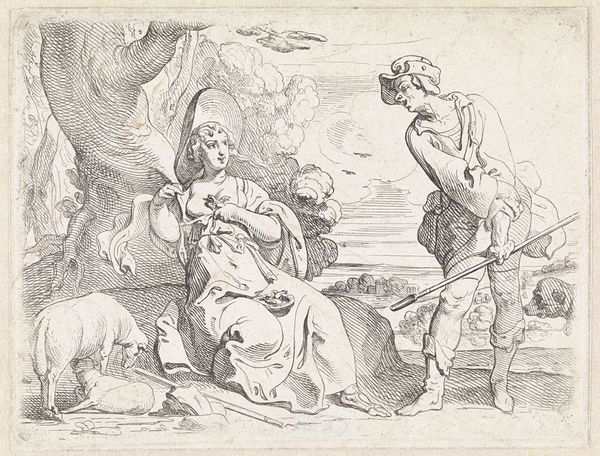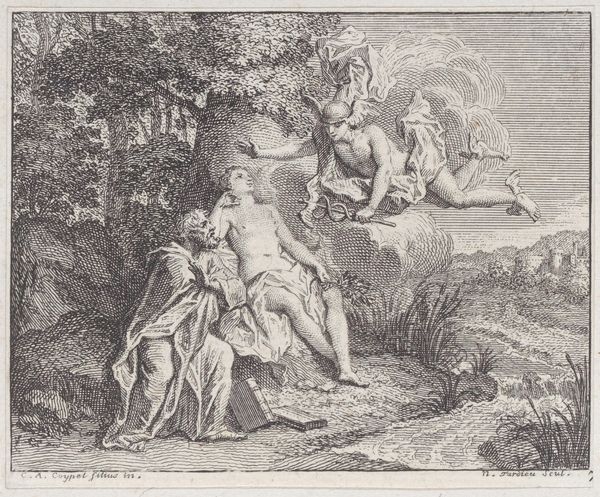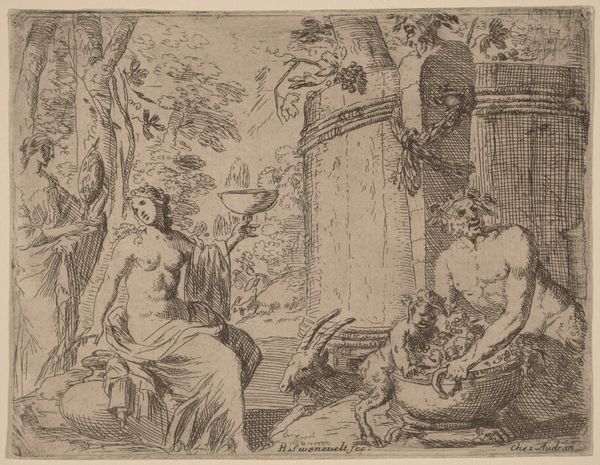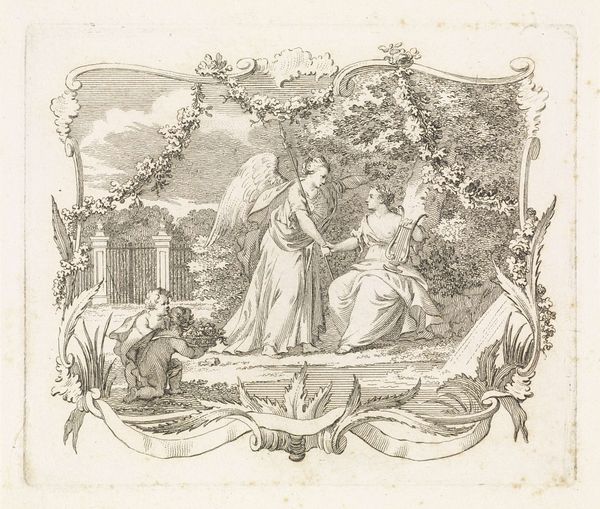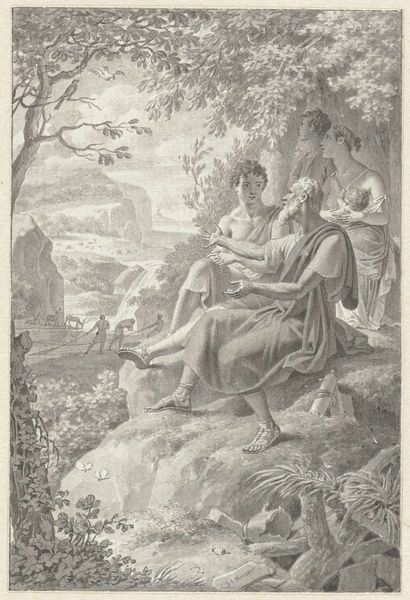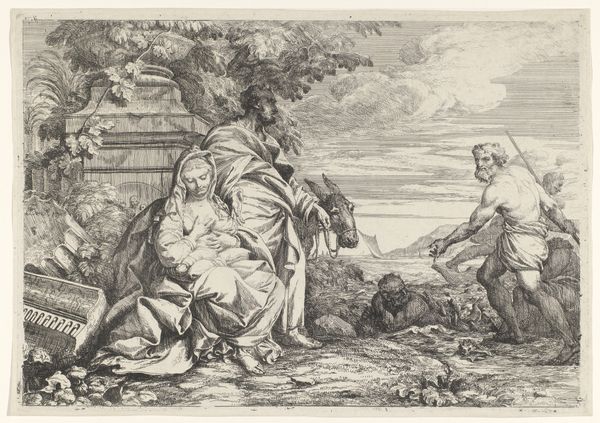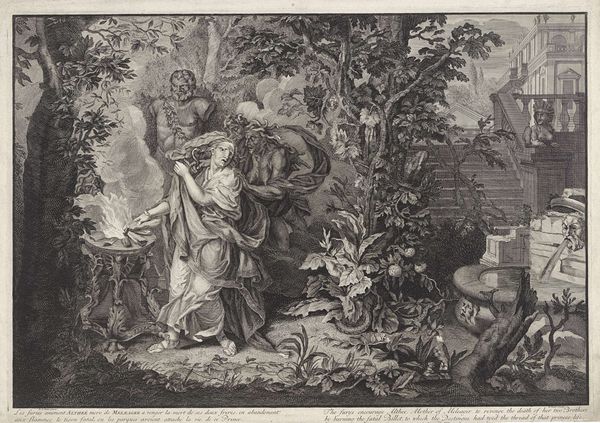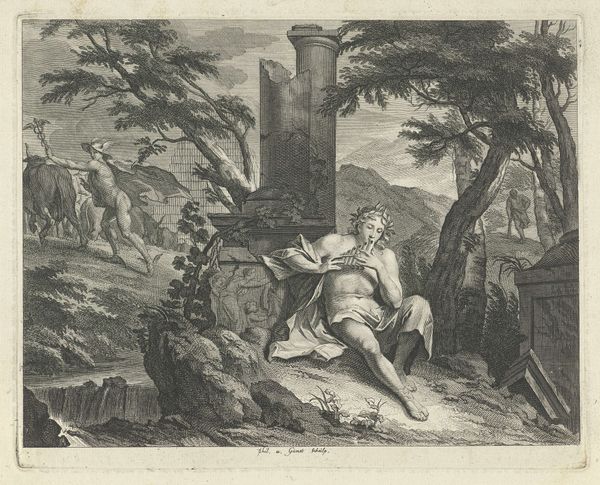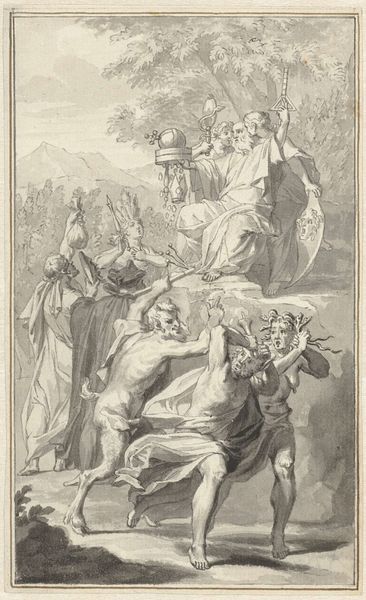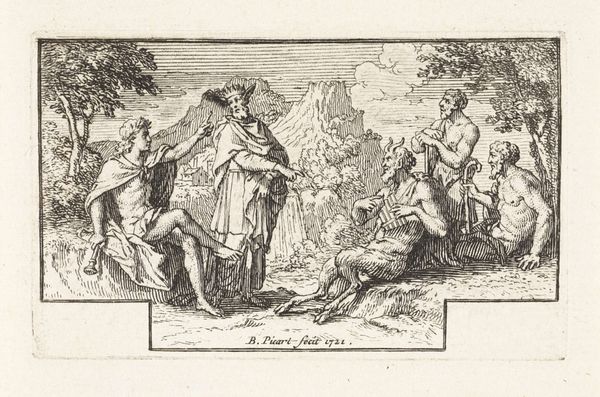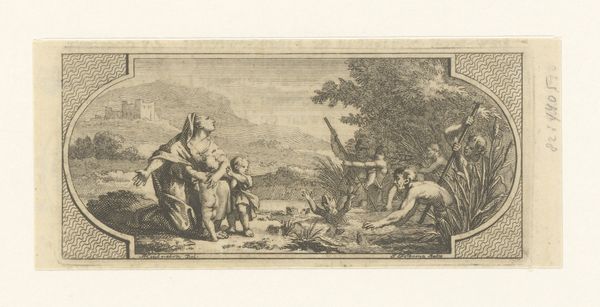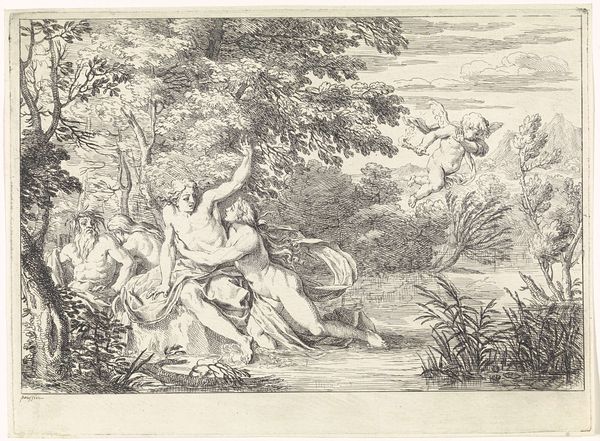
print, engraving
#
baroque
# print
#
pen illustration
#
old engraving style
#
landscape
#
figuration
#
line
#
history-painting
#
engraving
Dimensions: height 90 mm, width 144 mm
Copyright: Rijks Museum: Open Domain
Jacob Folkema created this print, "Minerva and Telemachus," in the Netherlands sometime in the 18th century. The image comes from Homer's "Odyssey," where Minerva, the goddess of wisdom, appears to Telemachus, son of Ulysses. Classical themes were very popular during this time, expressing ideas about virtue. Dutch artists often looked to the ancient world for inspiration. But instead of mythologizing the past, Dutch artists often used classical subjects to comment on their own society, reflecting the values and aspirations of the Dutch Republic. For instance, the presence of Minerva, a female deity, may reflect the relative freedom and influence that women enjoyed in Dutch society compared to other parts of Europe. The fact that the image is a print also tells us something about the democratization of art at this time, and how images began to circulate into a broader public. By researching prints like these, we can learn a great deal about the cultural values of the Dutch Republic, and the ways in which art both reflected and shaped those values.
Comments
No comments
Be the first to comment and join the conversation on the ultimate creative platform.

